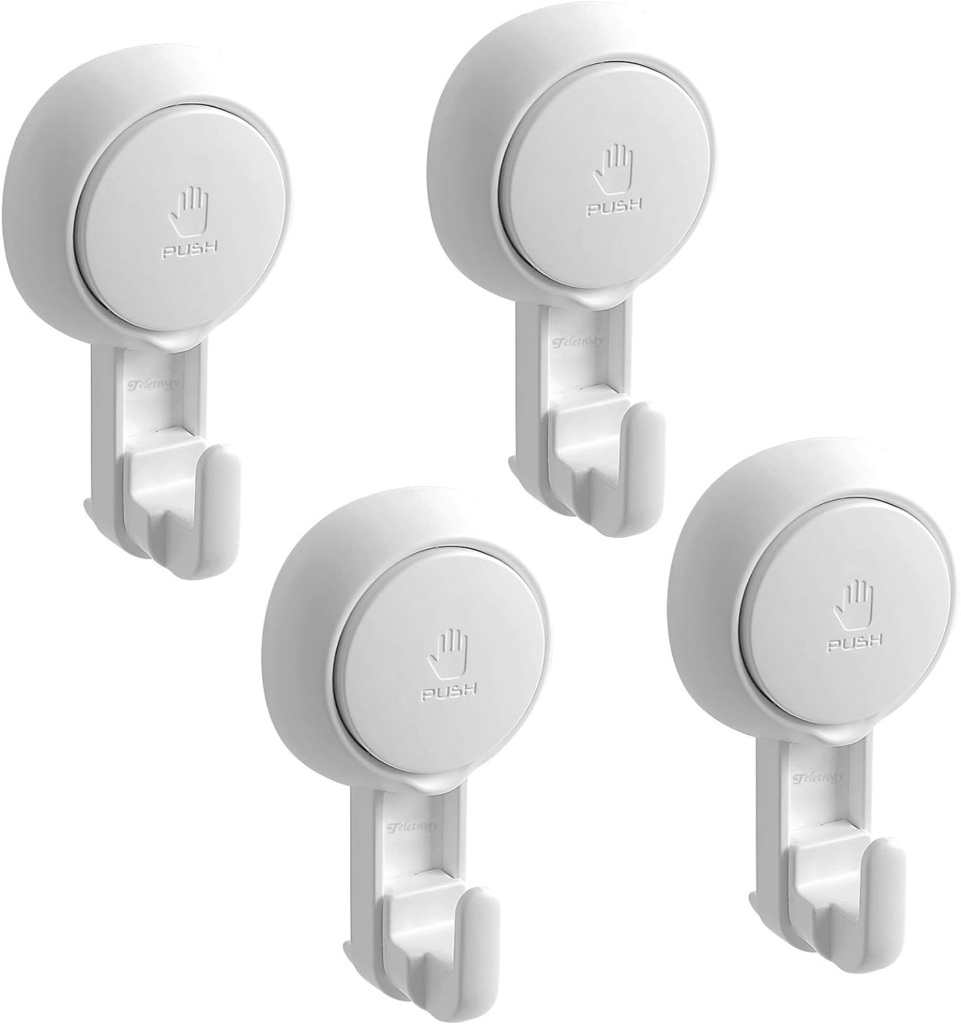Suction hooks, those small, disc-shaped devices that adhere to surfaces without the need for nails or screws, have become a staple in many homes and offices. Their versatility and ease of use make them a popular choice for hanging everything from towels and coats to utensils and decorations.

Understanding Suction Hooks
Suction hooks work by creating a vacuum between the hook and the surface it is attached to. This vacuum is strong enough to hold the weight of many objects, making them a convenient and damage-free alternative to traditional hanging methods.
Key Components of a Suction Hook:
- Base: The flat, circular part that adheres to the surface.
- Cup: The hollow part that creates the vacuum.
- Hook: The protruding part used for hanging items.
Types of Suction Hooks:
- Single-Hook: These are the most common type, with a single hook protruding from the base.
- Multi-Hook: These have multiple hooks, allowing you to hang more items simultaneously.
- Heavy-Duty: Designed to hold heavier items, these suction hooks often have a larger base and a stronger vacuum.
- Decorative: These come in various designs and materials, making them a stylish addition to your home or office.
Choosing the Right Suction Hook
When selecting suction hooks, consider the following factors:
- Weight of the Items: Ensure the suction hook can support the weight of the items you want to hang.
- Surface Type: Different surfaces require different types of suction hooks. For example, smooth surfaces like glass or tiles are ideal, while textured surfaces may require specialized hooks.
- Desired Load Capacity: If you need to hang heavy items, opt for heavy-duty suction hooks with a high load capacity.
- Aesthetic Preferences: Choose suction hooks that complement your home or office decor.
Tips for Using Suction Hooks
- Clean the Surface: Ensure the surface is clean and dry before applying the suction hook.
- Apply Firm Pressure: Press the suction hook firmly onto the surface to create a strong vacuum.
- Wait for Adhesion: Allow the suction hook to adhere to the surface for a few minutes before hanging anything on it.
- Avoid Excessive Weight: Don’t overload the suction hook, as this can weaken the vacuum and cause it to detach.
- Inspect Regularly: Periodically check the suction hook to ensure it is still securely attached.
Common Uses for Suction Hooks
Suction hooks have a wide range of applications, including:
- Bathroom: Hanging towels, loofahs, razors, and toothbrush holders.
- Kitchen: Hanging utensils, potholders, and mugs.
- Bedroom: Hanging clothes, scarves, and jewelry.
- Office: Hanging cables, headphones, and organizers.
- Shower: Hanging shower caddies, loofahs, and razors.
- Vehicle: Hanging organizers, phone holders, and air fresheners.
Alternatives to Suction Hooks
While suction hooks are a convenient and versatile option, there are other alternatives worth considering:
- Command Strips: These adhesive strips are a popular choice for hanging items on walls without damaging the surface.
- Nails or Screws: For heavy items or permanent installations, traditional hanging methods using nails or screws may be necessary.
- Shelves: Shelves provide a more stable and organized way to store items.
Suction Hooks: A Versatile and Convenient Solution
Suction hooks offer a convenient and damage-free way to hang items in your home or office. By selecting the right type of suction hook and following proper usage guidelines, you can enjoy their versatility and functionality for years to come.

FAQ’S
How do suction hooks work?
Suction hooks rely on atmospheric pressure to adhere to surfaces. They create a vacuum seal between the hook and the surface, preventing them from falling.
What surfaces can suction hooks be used on?
Suction hooks are designed to work best on smooth, non-porous surfaces such as:
- Glass
- Tiles
- Metal
- Plastic
Note: Avoid using suction hooks on rough, textured, or porous surfaces like wood, brick, or wallpaper.
Are suction hooks strong?
Suction hooks can be quite strong, especially when used on smooth surfaces and when the instructions are followed correctly. However, it’s important to avoid hanging heavy items that could exceed the hook’s weight capacity.
How to install a suction hook?
Clean the surface: Ensure the surface is clean and dry before applying the suction hook.
Remove the protective film: Peel off the protective film from the suction cup.
Press firmly: Press the suction cup firmly onto the surface, ensuring there are no air bubbles trapped underneath.
Wait: Allow the suction hook to sit for a few minutes to create a strong seal.
How to remove a suction hook?
Gently twist: Slowly twist the suction hook counterclockwise until the suction seal breaks.
Lift off: Carefully lift the hook away from the surface.
Can suction hooks be reused?
Yes, suction hooks can often be reused. However, the suction power may decrease over time, especially if the hook is removed and reattached frequently.
What can I hang with suction hooks?
Suction hooks can be used to hang a variety of items, including:
- Towels
- Bathrobes
- Loofahs
- Soap dishes
- Toothbrushes
- Pictures
- Decorations
- Utensil holders
- Keychains
How to choose the right suction hook?
When selecting suction hooks, consider the weight of the items you want to hang and the surface you’ll be using them on. Heavy items may require larger or stronger suction hooks.
Are suction hooks safe for bathrooms?
Yes, suction hooks are generally safe for bathrooms. However, it’s important to choose hooks that are specifically designed for wet environments and to avoid hanging heavy items near bathtubs or showers.
Can suction hooks be used outdoors?
While some suction hooks are designed for outdoor use, it’s important to choose models that are weatherproof and can withstand exposure to elements like rain, wind, and sunlight.
To read more, Click here